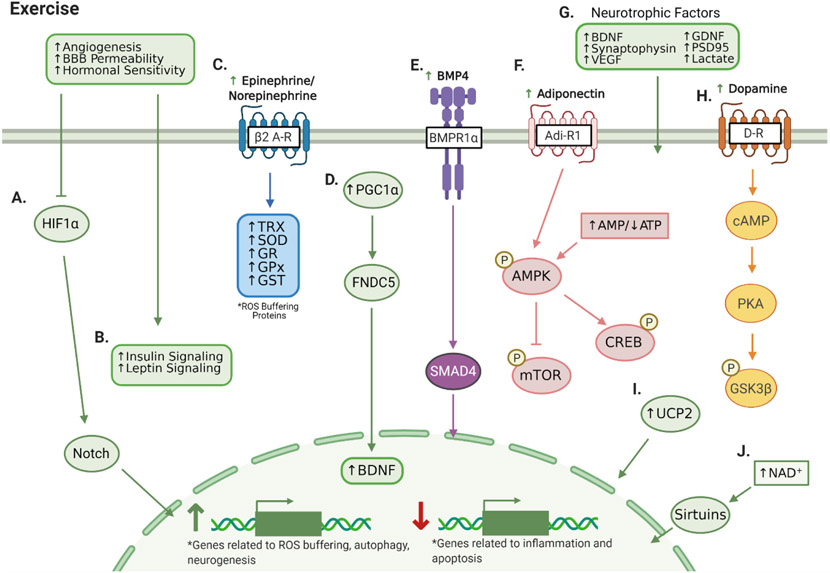Figure 5. Exercise and AN.
Aerobic exercise improves angiogenesis, BBB permeability, and hormonal sensitivity, (A) Enhancing oxygen availability which inhibits HIF1α and downstream Notch signaling to reduce glycolytic gene expression and promote AN. (B) Improved angiogenesis and hormonal sensitivity also increases insulin and leptin signaling. (C) Exercise-mediated β2 adrenergic receptor signaling increases expression of ROS buffering proteins thioredoxin (TRX), superoxide dismutase (SOD), glutathione reductase (GR), glutathione peroxidase (GPx), and glutathione-S-transferase (GST). (D) Exercise-induced PGC1α stimulates FNDC5, which is critical to increasing BDNF. (E) Exercise increases circulating bone morphogenic protein 4, which binds to hippocampal bone morphogenic protein receptor 1α to stimulate neurogenic transcriptional activity of SMAD4. (F) Exercise increases adiponectin levels and AMP/ATP ratios to activate AMPK. AMPK inhibits mTOR to promote NSC renewal and autophagy and activates CREB to promote stress resistance and AN. (G) Exercise increases expression and activity of a plethora of neurotrophic factors. (H) Exercise stimulates dopamine→cAMP→PKA signaling to increase GSK3β activity. (I) The neuroprotective effects of exercise are greatly blunted in UCP2 knockout mice. (J) Exercise increases NAD+ levels, which stimulates the neurogenic and neuroprotective effects of sirtuins. Created with BioRender.com.

